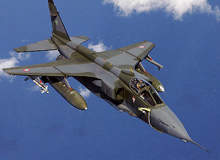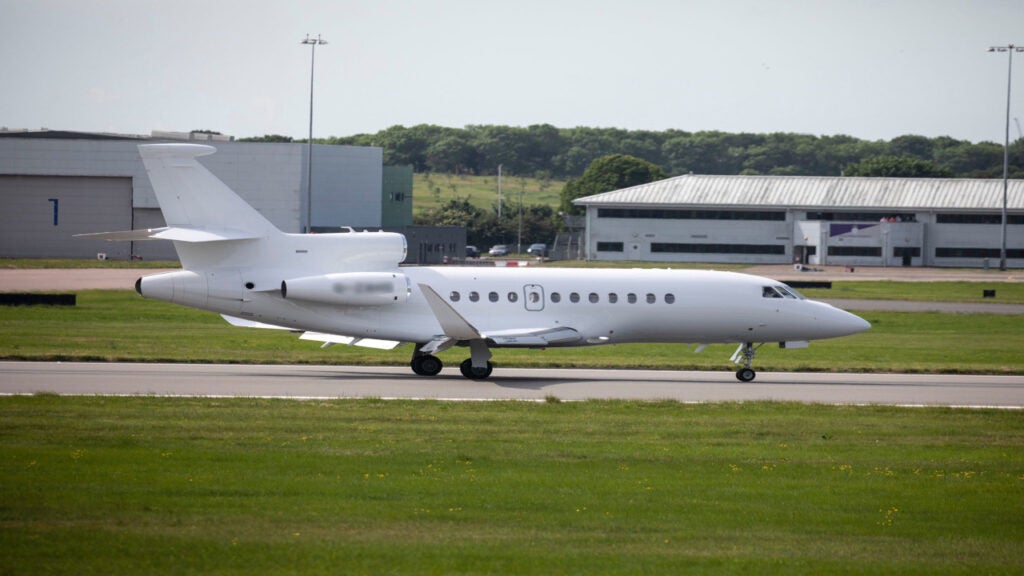
Jaguar is a twin-engine, ground-attack aircraft designed and developed jointly by Breguet of France (now part of Dassault) and the UK-based British Aircraft Corporation (BAC).
The two companies formed a joint venture called SEPECAT to develop the aircraft. A total of 573 jaguars have been ordered globally, comprising 403 to France and the UK, 54 to Oman, Ecuador, Nigeria and 116 to India. Jaguar was retired from the air forces of France, the UK, Oman, Ecuador and Nigeria.
The aircraft is currently operated by the Indian Air Force (IAF) and is expected to serve the IAF until 2034.
Jaguar strike aircraft variants
The Jaguar has 23 variants including Jaguar A, B or T2, T2A, T2B, T4, E, S or GR1, GR1A, GR1B, GR3, GR3A, M, ES, EB, S(O), B(O), IS, IB, IM, SN, BN, Jaguar Active Control Technology and Jaguar International. The Jaguar A is a single-seat low-level attack aircraft deployed by the French Air Force (FAF). Its maiden flight took place in March 1969. Two prototypes and 160 production units were built.
The Jaguar B is a two-seat trainer model built for the RAF. The variant completed first flight in August 1971. It can execute strike role and ground attack missions too. A total of 39 aircraft including one prototype were built.
The Jaguar E is an improved trainer version equipped with two cockpit seats. A total of 41 aircraft including one prototype were developed for the FAF.
The Jaguar S is a ground attack model built for the RAF. Its maiden flight took place in October 1969. It is incorporated with navigation and armament aiming sub-system, Adour Mk 104 propulsion, laser ranger and marked target seeker.
The Jaguar M is a naval version principally deployed for maritime patrol missions. Deployed by the French Navy, the variant features reinforced airframe, an arrestor hook, and a unique landing gear with two nose wheels and a single main wheel.
Jaguar orders and deliveries
The Indian Air Force (IAF) placed a $1bn order in 1978 to procure 40 Jaguars and license to build 120 Jaguar aircraft at Hindustan Aeronautics Limited (HAL) under the local designation Shamsher.
India temporarily accepted two Jaguars from RAF in July 1979 under the first batch before establishing its production line in HAL. The delivery of the second batch of 40 Jaguars began in 1981. The third batch comprising assembly kits of 45 aircraft were transported to HAL in May 1981. The IAF acquired 17 Jaguars in 1999 and 20 more between 2001 and 2002. HAL has built 90 Jaguars, many of which are still in service.
A total of 10 Jaguar ESs and two Jaguar EBs were procured by the Ecuadorian Air Force. Deliveries began in January 1977. Nigeria ordered 13 Jaguar SNs and five Jaguar BNs in 1983. Deliveries started in May 1984. The Royal Air Force of Oman (RAFO) procured 10 Jaguar OSs and two Jaguar OBs. Deliveries commenced in March 1977. About 12 additional Jaguars were ordered by RAFO in the 1980s. Oman retired its last four operating Sepecat Jaguars in 2014.
Design of the SEPECAT Jaguar aircraft
The Jaguar is of monoplane design with an aluminium airframe. The aircraft is equipped with an in-flight refuelling probe at the starboard side of the front fuselage to execute air refuelling missions even under the worst weather conditions. It is equipped with spoilers, air brakes, rudder, double-slotted flaps, slats, critical systems and bulletproof windscreen.
Jaguar ground attack aircraft development details
Breguet and BAC joined in 1966 to develop the Jaguar. The aircraft was initially developed as a jet trainer with light low-level attack capability but later its missions were upgraded to include supersonic, reconnaissance and tactical nuclear strike roles.
Construction of the Jaguar was equally shared between the two companies, with BAC developing the wings, intakes, rear fuselage and tail, and Dassault building the nose, centre fuselage and landing gear. Dassault became a partner in the project by acquiring Breguet in 1971. The maiden flight took place in September 1968 and the aircraft entered service with France in 1973.
The Jaguar was built to supersede the RAF’s McDonnell Douglas Phantom FGR2. The French Army procured Jaguar to retire its obsolete fleet of Aeronavale’s Dassault Étendard IV.
The Jaguars were retired by the French Army in July 2005, the RAF in April 2007, and the RAFO in 2014. The IAF currently has 118 aircraft in service. India is planning to supersede its Jaguars with the advanced medium combat aircraft (AMCA), which is currently under development.
Cockpit of the Jaguar
The Jaguar features an all-digital cockpit enclosed within a glass canopy. The cockpit is equipped with head-up display, multifunctional display, night vision and GPS.
Other features include a helmet-mounted display, radar altimeters, inertial navigation system, automatic direction finder, information friend or foe, weapon aiming computer and digital data bus.
Armaments fitted to the ground attack aircraft
The Jaguar is armed with two 30mm DEFA cannons, which can fire munitions at the rate of 150 rounds per gun. The aircraft has five hardpoints, four under the wings and one under the centre-line pylon stations. It can carry up to 4,500kg of payload.
The aircraft can accommodate AS.37 Martel anti-radar missiles, AS-30L laser guided air-to-ground missile and two R550 Magic air-to-air missiles on underwing pylons. It can also carry AN-52 nuclear bomb, eight Matra rocket pods, BAP 100mm bombs, MATRA AS37 anti-radar missiles, AIM-9 sidewinder missiles and rockeye cluster bombs. The IAF’s Jaguar fleet will be equipped with an advanced short-range air-to-air missile (ASRAAM) of MBDA.
SEPECAT Jaguar engines
The Jaguar is powered by two Adour Mk 102 turbofan engines rated at 22.75kN of dry thrust each. The engine is designed and built jointly by Rolls-Royce of UK and Turbomeca of France in 1968. It is a two-shaft engine which generates 32.5kN of thrust afterburner.
The length and fan tip diameter of the engine are 2.9m and 0.57m respectively. The dry weight is 809kg.
The Jaguar deployed by the IAF is powered by two Adour Mk 811 turbofan engines. The IAF will upgrade its 125 Jaguars by replacing the engines with either Adour Mk821s or Honeywell F125IN to improve performance, particularly at medium altitudes.
Jaguar aircraft performance
The Jaguar can fly at a maximum speed of 1,699km/h. The combat radius and ferry range of the aircraft are 908km and 3,524km respectively. The service ceiling is 14,000m.
Darin III – upgrade to the Jaguar ground attack aircraft
HAL conducted successful maiden flight of Darin III, an upgraded Jaguar aircraft, in November 2012. The Darin III features modernised navigation, electronic warfare and weapon delivery system in addition to upgraded avionics over the Jaguar. The upgrades were done indigenously by HAL.
India successfully carried out the maiden test flight of Jaguar DARIN III aircraft with active electronically scanned array (AESA) radar in August 2017. HAL equipped the aircraft with the IAI/ELTA ELM-2052 advanced radar for the test flight.
New avionics, a cockpit, and model for the latest DARIN III were unveiled by HAL at the Aero India exhibition in February 2019.
HAL plans to modify approximately 60 Jaguars to DARIN III standard. The Advanced Short-Range Air-to-Air Missile (ASRAAM) was integrated into the Sepecat Jaguar in the HAL facility for first test firing in October 2019. The ASRAAM missile measures 2.9m in length and range between 25km to about 50km. The missile weighs 88kg. HAL also exhibited Jaguar MAX (Mothership for Augmented Xploitation), a heavily armed upgraded Jaguar aircraft, which is above DARIN III+ standard.



